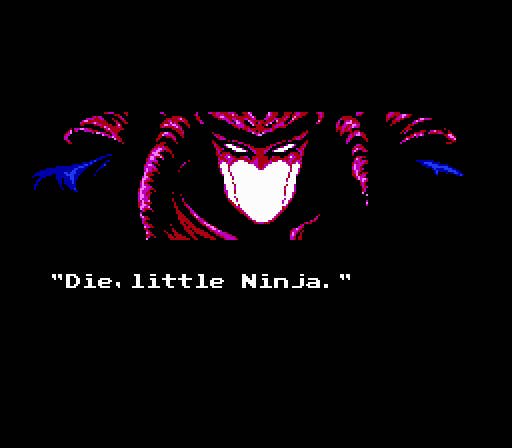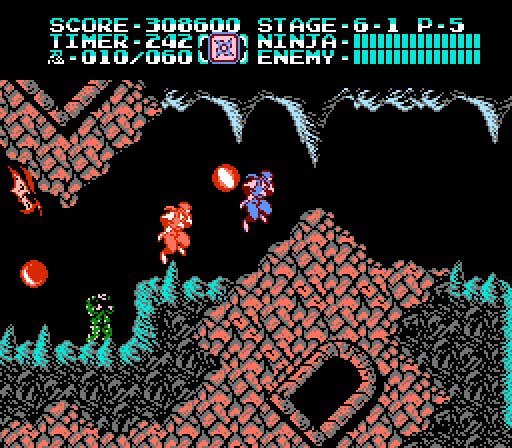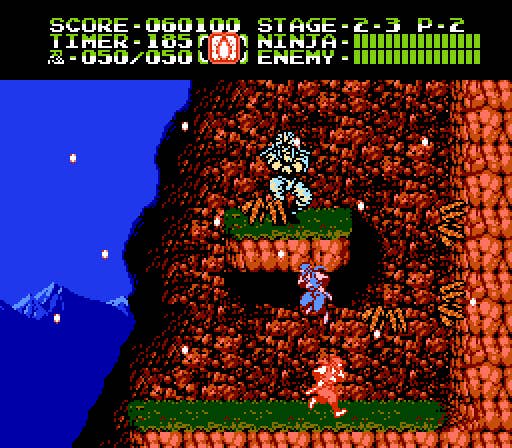Virtual Spotlight: Ninja Gaiden II - The Dark Sword of Chaos
Ryu's most excellent adventure comes to 3DS.
This article first appeared on USgamer, a partner publication of VG247. Some content, such as this article, has been migrated to VG247 for posterity after USgamer's closure - but it has not been edited or further vetted by the VG247 team.
Let's take a trip back to the olden days, when Ninja Gaiden meant high-speed 2D cinematic platforming action through impossibly difficult demon-infested stages, and not "that one game with the ninja dude from DOA that no one plays as because he's not a girl." On the contrary, the old Ninja Gaiden games had a totally different response to girls: Namely, "Get out of here!"
The first Ninja Gaiden was developed in parallel for arcades and the Nintendo Entertainment System, with each version being wildly different from the other and ported to other systems a number of times. (I recently participated in a podcast on this very subject, in case you'd like to know more.) The arcade brawler was interesting enough, but it was the NES game that really caught the world's attention. Its appeal lay somewhat in the hyper-hardcore jump-and-slash combat, but even more so in its movie-like presentation. Well, really, its presentation was more manga-like than anything, but how many of us American kids reading Nintendo Power had the first clue what manga was (despite the magazine's contributions by legendary manga creators like Shotaro Ishinomori)? Our video game suddenly was telling a story through cool, slightly animated cut scenes! How awesome was that?

Alas, not a whole lot of gamers ever saw how the story ended, because Ninja Gaiden was insanely difficult. The final stage didn't simply kick players right in the butt; when they died to the three-form final boss, they were flung back three stages to struggle through the brutal ultimate gauntlet again. And again. And again.
The task at hand for the sequel, then, was to up the cool factor, improve the gameplay, and make it more accessible. And in fact, it did manage to accomplish all these things, more or less. Ninja Gaiden II: The Dark Sword of Chaos featured a considerable graphical upgrade over the already appealing-looking original, with denser, more detailed graphics that grew increasingly unearthly as the player descended into the demonic depths. Eventually, you'll find yourself battling your way along the tilting, crumbling ruins of an ancient unground castle threaded through with waterfalls and baleful monsters, creating a far more unnerving sensation than any of the older game's more sedate environments.

Its story is considerably more convoluted than its predecessor's fairly straightforward tale of revenge and betrayal, with the intimidating new villain Ashtar eventually revealed to be a far more modest threat than the true mastermind behind the scenes. Though some of the plot twists don't make much sense and the cutscenes abandon any commitment to continuity early on (how many characters seemingly die over the course of the story only completely shrug it off in the next chapter?), the visual panache with which they're revealed helps smooth over those shortcomings.
Most importantly, though, The Dark Sword of Chaos played much better than its predecessor. In fact, it features the best action in the entire franchise, perched at the perfect balancing point between deep versatility and cumbersome excess. Protagonist Ryu Hayabusa gains some useful new skills, including the ability to climb walls rather than simply stick to them, making it far easier to recover from a slip-up at the end of a platform. His most significant upgrade comes in the form of his shadow clones, a pair of ghostly ninjas who follow behind him and mimic his every action. They're somewhere between the "blue shadows" of Street Fighter Alpha and the Option taglongs of Gradius.

Ryu's clones greatly tip the balance of the game in the player's favor. Make no mistake, it's still crazy difficult, with endlessly respawning enemies (including those damnable eagles) and practically zero recovery time when Ryu takes damage. But proper mastery of the clones allows a player to set up any number of strategic attacks that can make short work of otherwise impossible foes. Because the clones trail behind Ryu precisely at a fixed distance, they'll even remain airborne provided the player doesn't move. If you can find a safe spot to lurk, you effectively are able to send an indestructible ally into the thick of action to unleash the exact same destructive power as Ryu himself.
A mediocre player will still have a tough time of things, but the odds of seeing the ending are much better here than they were in the first game. It doesn't hurt that losing to the final boss gauntlet will only send you back two stages instead of three. In a game this nasty, any little edge makes a difference.
ConclusionA stunning (albeit occasionally unfair) action classic, Ninja Gaiden II still stands as one of the NES's best. And really, 3DS Virtual Console is by far the best legal way to play it. Those save states make a world of difference.
